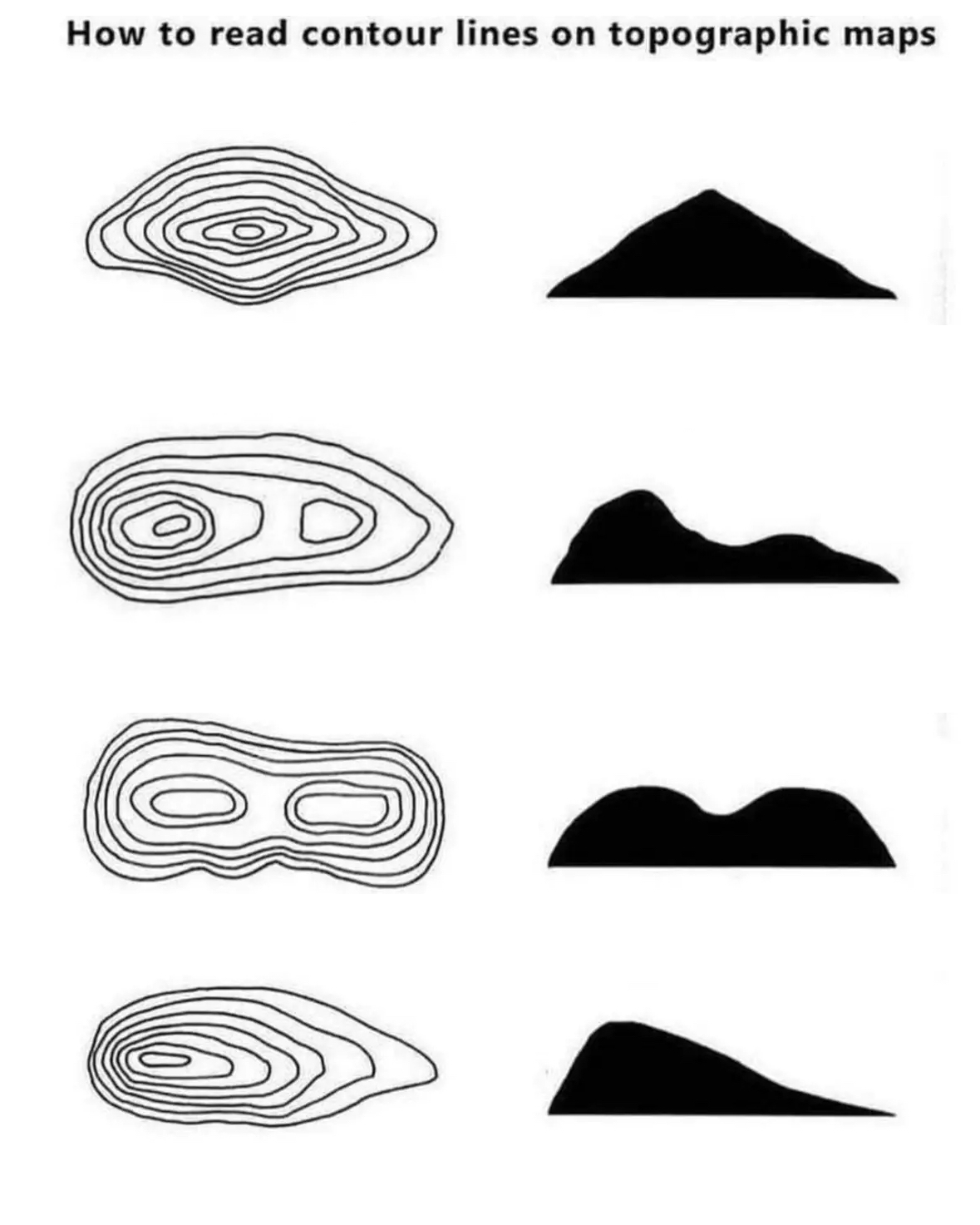I always found these very intuitive, but I don’t know if that’s just due to having an analytical mind, or just learning this stuff early. Do people struggle to understand topographic maps?
In the Land Nav portion of PLDC (US Army training for becoming a Sergeant - is called something else now) there were soooooo many people that failed out/had to do it over again, that I was super worried when I did it. Seemed pretty damn easy to me. 🤷
I think your analytical mind got “typographic” and “topographic” mixed up…
Ah, was it a typo or topo that got autocorrected? We’ll never know (fixed, ta).
usually topografic maps are a bit more complex so I feel like this guide is useless
It gives a basic idea, but I think something like Cities:Skylines where you can create maps using a height map and then get the topography lines in a 3d space where you can actively shift the camera around to see them overlaid from any angle would probably help people grasp the idea.
Having said that, I’m now imagining drone footage overlaid with the height maps as an additional resource to standard topographical maps. Would be neat if somebody could create software that could calculate and overlay the height maps in real-time using the drone’s altimeter or something.
Everything reminds me of her
Except all of the hills could be valleys, you need to see the numbers on the contours
If it were a local depression instead of a hill, the lines would be hatch-marked on the side pointing into to depression.
Do you have an example, I either never have seen this or never had a depression on a map
Ah, awesome. i appreciate you taking the time to put this together. I dont recall these on maps, but as you said numbers are common. And i typically use the topomap with shading, so shading helps with understanding the terrain
You want an example of local depression just swing by my place anytime
heyoooo!
That’s interesting, ordinance survey (in the UK) don’t do that, so it isn’t a universal standard
In the UK, you have to notice that the heights are reducing
I was expecting boobs for the last one. They’re almost there too.
Imagine being down bad enough to get off on a topological map …
Ok, what should I imagine next?
Those all look vaguely sexual to me.
My brother in Rorschach, you are not alone.
Tell you what, if this ever comes up in a psychological evaluation I’m fucked…
“Tell me, what do you see here?”
“A damn fine rack is what”
Hey, 111000 is the one who keeps showing us all the sexy pictures!
I made an improved condensed version of this that still gets the point across

Boobs
This is pretty helpful for something like Zelda for me
I’ve always been curious about topographical maps that involve curved or hanging terrain and whether there’s a way to denote the existence of an area beneath. That’s obviously going to be irrelevant 99.9% of the time, but grade school curiosity rarely fades completely.
The rare overhang distinct enough to be captured in topography is i dicated by a brown dotted line in usgs maps







